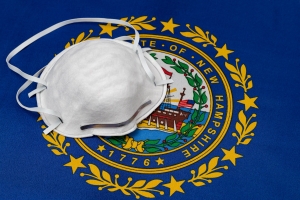What are the new restrictions on the governor’s emergency powers?

Gov. Sununu allowed the COVID-19 state of emergency to end on June 11, but some people are still concerned about how emergency powers can be abused – particularly if there’s another surge of coronavirus cases this fall. As a result, legislators revised the governor’s emergency powers when they passed the state budget in June. Here’s a rundown of the new limits on the governor.
Notification requirements
New Hampshire’s emergency powers law now requires the governor to notify the Speaker of the House and the Senate President of any upcoming emergency orders “as soon as practicable.”
The law also requires the governor to provide the Executive Council with a list of expenditures related to a state of emergency within 30 days of spending the money. This list is for “informational purposes only.”
The governor voluntarily provided some information of this information throughout the COVID-19 state of emergency, so these notification requirements probably won’t have a significant impact on how a state of emergency unfolds in the future.
Oversight of spending
Under a new law, the joint legislative fiscal committee must approve any federal grants or loans over $100,000 during a state of emergency. However, if the fiscal committee does not act within five days, the governor can accept and spend the funds without their input.
The law also lets the governor accept and spend funds without legislative input if there is an emergency that presents an immediate threat to public health and safety. If that happens, the governor must notify the Speaker of the House, the Senate President, and the chair of the fiscal committee within 24 hours.
Last year some representatives sued the governor for more legislative involvement in the spending of federal funds, but they lost in court. This new law should give the Legislature more involvement in spending decisions. However, with the five-day and emergency exceptions, this law might not have a big impact on the governor’s spending decisions in future emergencies.
90-day review
Arguably the biggest change to the state’s emergency powers law is a new requirement for the governor to address a joint session of the House and Senate every 90 days during a state of emergency. At that point the House and Senate must vote on whether or not to end the emergency. If a majority in the House and a majority in the Senate agree, the state of emergency ends.
The law also clarifies that the Legislature is exempt from any emergency orders that “would infringe on their ability to travel and conduct their business as representatives of the people.” That means, for example, the governor could not prohibit the House from meeting because of the size of the gathering.
It is worth noting that the Legislature already had the power to end a state of emergency with a majority vote in both chambers. The difference now is that the Legislature will be forced to vote on the issue every 90 days.
Religious protections
There is a standalone bill, HB 542, that would require the state to allow religious activities to proceed to the same or greater extent as other essential business activity during a state of emergency. That bill is headed to Gov. Sununu for a signature or veto.
Are these changes significant?
In summary, the governor still retains the same emergency powers as he did before this new law. The biggest difference is that the Legislature will be forced to vote on ending a state of emergency every 90 days. The governor is also generally required to keep legislative leaders “in the loop” on spending and emergency orders, but he can make decisions without legislative input if there is an immediate threat to public safety.
Some legislators believe these changes do not go far enough. There were several proposals to add more limits on the governor’s emergency powers that didn’t pass this year, such as requiring legislative approval to renew an emergency after 21 days. These ideas may reappear as new bills in 2022.
If you want an overview of all the governor’s emergency powers before these changes, check out our article from 2020.
If you want to review all the governor’s emergency orders during the COVID-19 pandemic, see our tracker.
If you want to explore some of the other proposals to limit emergency orders, visit our topic page on Public Health and Safety.











Comments
Login or register to post comments